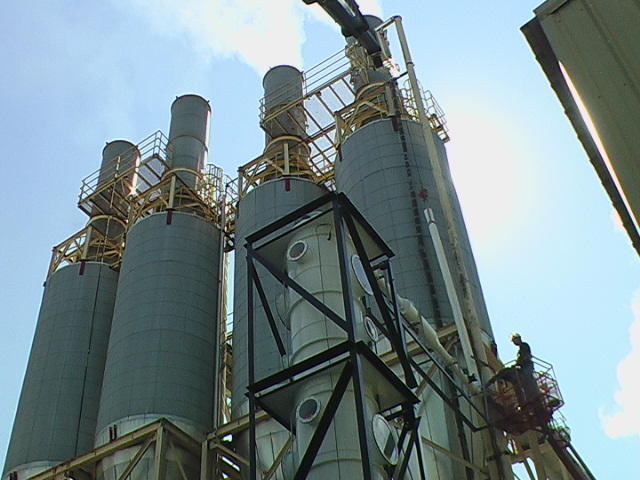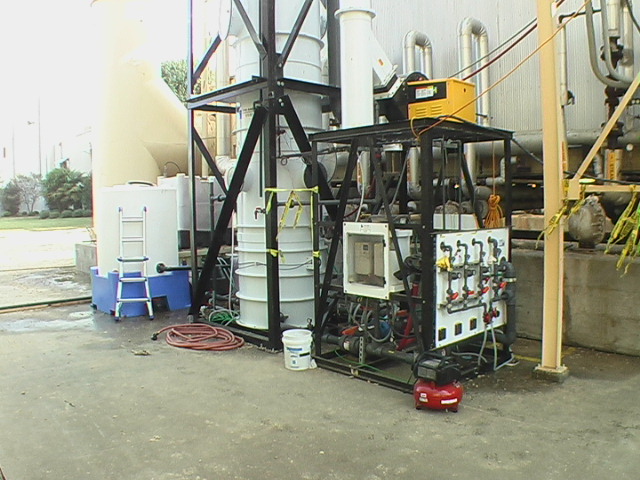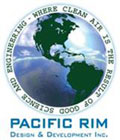WHY IS THIS NOVEL?
In this example PRDD combined three conventional air quality treatment processes in an innovative way to meet an EPA Maximum Achievable Control Technology (MACT) requirement for the engineered wood industry. The EPA requirement focused on the abatement of methanol and formaldehyde generated in exhaust air during the manufacturing process for particle board, plywood and similar products.
PRDD’s “Triple Integrated Process” solves the EPA MACT requirement in an environmentally friendly and very cost effective way. The PRDD process utilizes two biological methodologies and a chemical process that are symbiotically interconnected. Furthermore, the process utilizes the saw dust that would clog most conventional abatement processes.
SO HOW DOES IT WORK?
The following description is graphically displayed in the drawing below. The letters in parenthesis in the descriptions identify components depicted on the drawing.
The contaminated exhaust air steam is treated in the following sequence in the triple integrated process. Initially the air interacts with the fine mist (C) at the top of the central reaction chamber (D). The mist and the contaminated air thoroughly mix as they move concurrently downward through the central reaction chamber (D). The mixing transfers the water soluble target organic and sulfide compounds from the gas phase into the liquid phase. The residence time is process specific.
The gas stream then makes a 180 degree turn and moves upward carrying the remainder of the entrained organic compounds through a synthetic bioscrubber media (G) bed while gravity pulls the larger agglomerated droplets out of the air steam, dumping them into the aerobic digester sump below (E). The bioscrubber media contains biological organism that digest organic compounds and is wet with recirculated water that is sprayed (H) over the top of the packing material. The VOC / sulfide laden air interacts with the wet surface of the bioscrubber media, and transfers most of the remainder of the VOC’s and sulfides into this biologically rich slime layer where they are consumed. The overall system removal efficiency for methanol and formaldehyde is typically in excess of 99%
The liquid in this digester is continuously recirculated (J) through a backwash filter (K) to remove excess particulate and through venturi’s (M) that transfer oxygen into the water for continued aerobic digestion.
The bioscrubber media (G) utilized in this process is engineered to prevent the accumulation of thick biomass. We have chosen a polypropylene packing with a geometry that facilitates a natural sloughing off of the excessive biomass. The high open area of this structured packing also insures this discarded biomass will wash through the packing into the aerobic sump (R) where it is biologically decomposed.
Additional information on this process is available in the attached paper presented at the USC-UAW Bioscrubber Conference in 2008.


Contact Us:
This is just one example of PRDD’s innovative air quality abatement technology development. We are the interested in learning about new opportunities to utilize our skills to solve challenging air quality abatement problems. Contact us for cost free project assessments.
Robert Richardson Ph.D.
Business Telephone: 530-474-4819
Email: Robert@prdd.net
|

Image of the upper section of the scrubber

Image of the pilot scubber

Image of the lower section of pilot scubber
|



